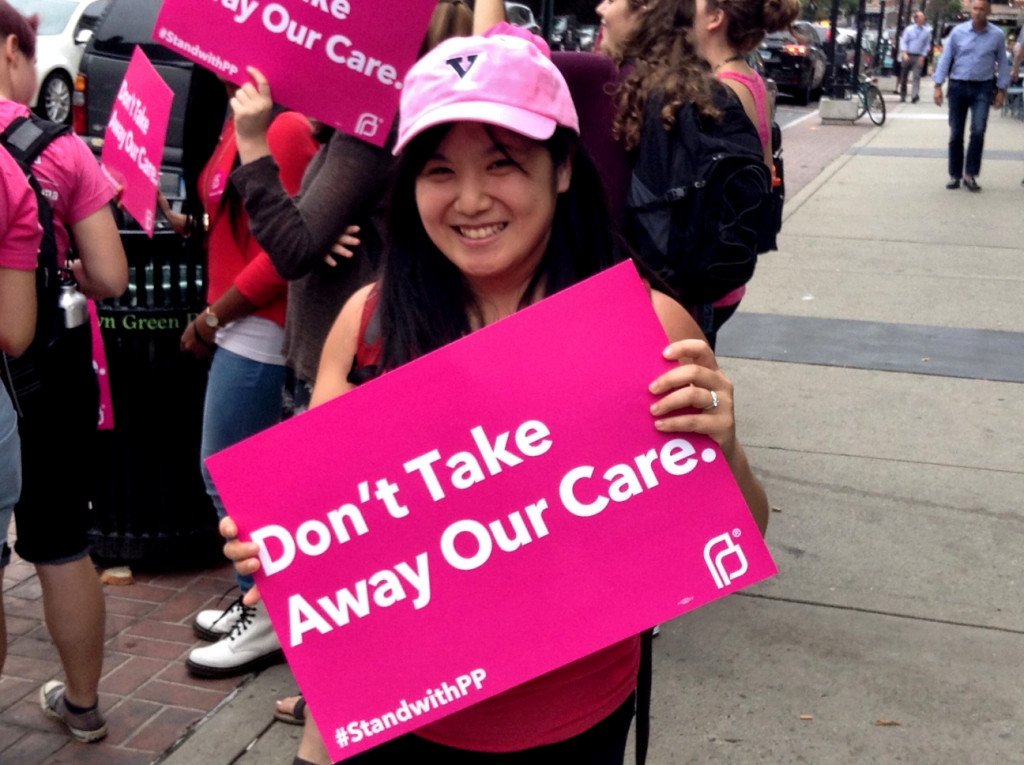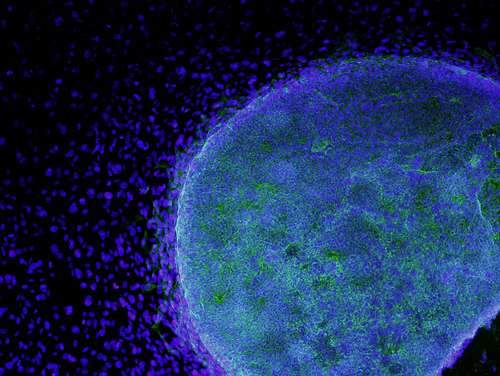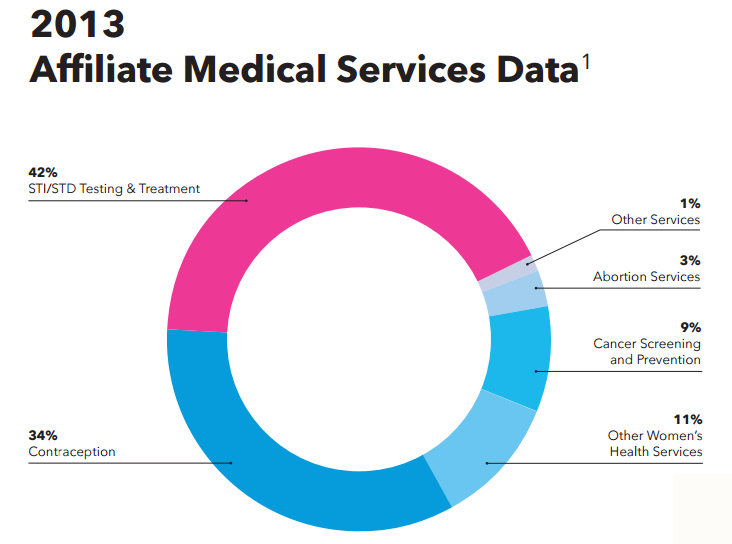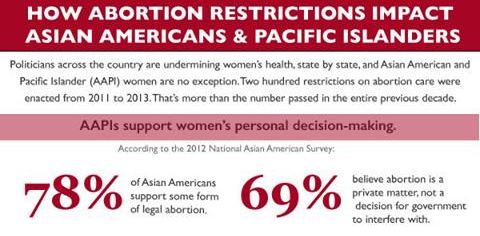
Women need, and deserve, unfettered access to high quality healthcare, including preventative, contraceptive and pre-natal care. This is not just a matter of constitutionality and equal rights, but also of basic morality. Women do not deserve to be penalized — medically, economically, or legally — for our womanhood. Yet, efforts to defund one of the nation’s largest healthcare providers of affordable healthcare services for women, as well as men, does just that.
Spurred by the release of highly-edited undercover video footage altered to give the impression that a Planned Parenthood affiliate was interested in selling donated fetal tissue for profit (which would be a violation of federal law, were that to be true; it’s not), Congress is now considering new measures to eliminate all federal Medicaid reimbursements to Planned Parenthood — a move which would cost the organization at least $390 million, roughly one-third of its annual funding. Without dispute, such a move would be devastating to Planned Parenthood’s healthcare service operations. The Congressional Budgetary Office estimates that in the likely event that Planned Parenthood is unable to replace lost Medicare funds, as many as 650,000 patients — most of them underprivileged women of colour — will experience reduced healthcare access. They further project that 390,000 patients will experience loss of healthcare access entirely.
It is unconscionable that we are even having this conversation.
The accusation that Planned Parenthood sells fetal tissue for profit appears to be completely without merit. The spurious undercover video created by a fake organization for obviously partisan anti-choice ends notwithstanding, there is zero evidence that Planned Parenthood has ever taken money — whether from clients or from biomedical research companies — for profit.
Abortion Access is Legal
As a country, we must face the simple facts: abortion is legal, and access to this medical procedure is a constitutional right. As a nation, we’ve already seen the consequences of restricted abortion access. We’ve seen how the absence of choice depresses our access to political, economic and professional agency. We’ve seen the promising careers of young women irreparably cut short by a forced unplanned pregnancy. We’ve seen women mutilated or killed by back-alley abortion providers. How can we proclaim to be committed, as a nation, to the rights of women in the pursuit of life, liberty and opportunity when we refuse to even acknowledge the rights of women over our own bodies? For some women, abortion is a medical necessity. For some women, abortion is a personal decision. For all women, the choice to have an abortion is a right.
It is senseless to selectively penalize Planned Parenthood — one of many hospitals and clinics that offers abortion services — for providing patients with access to a medical procedure that they have a legal and constitutional right to access.
Fetal Tissue Donation and Research is Also Legal

As a scientist, I find the anti-science rhetoric surrounding the current efforts to defund Planned Parenthood particularly concerning. Human fetal tissue research is not widespread, largely because access to source tissue is difficult and expensive. However, that does not mean that fetal tissue research is without value.
Despite the many advances that have been made in the last 50 years in biomedical research, there are many aspects of the human body that we still do not understand. Even though we have significantly improved our understanding of how individual cells work, researchers are still working tirelessly to understand how individual cells interact with one another in the complicated setting of a multi-cellular tissue; fetal cadaver tissue is scientifically irreplacable for this research because fetal cells are robustly self-renewing and often capable of becoming multiple cell types seen in the adult body. Research involving fetal tissue has been critical to advance not only our basic understanding of embryonic development, but also in research regarding disease progression and the development of tissue engineering therapies. Fetal-derived cells or multi-cellular tissues have been crucial for the development of treatments for a broad range of diseases, including but not limited to: schizophrenia, AIDS, spinal cord injury, diabetes, Parkinson’s Disease, and more.
Critics suggest that induced pluripotent stem cells — adult cells that have been artificially transformed into embryo-like stem cells — can be used to replace fetal tissue. As someone who works in stem cell research, I can tell you that this is a naive argument: 1) induced pluripotent stem cells are not as stem-like as those obtained from fetal cadaver sources, 2) there remains serious concerns that the same process whereby we are able to transform cells into induced pluripotent stem cells might leave them prone to becoming cancerous, and 3) we are currently no more capable of creating most fully functioning adult organs in the lab from individual induced pluripotent stem cells, as we are capable of throwing a bunch of Legoes up in the air and having them land in the form of an assembled spaceship. At a recent Republican debate, former Mike Huckabee expressed his commitment to finding cures for a host of chronic illnesses such as diabetes. This is a laudable goal, but this nation cannot expect to prioritize biomedical research while we refuse to speak reasonably about the current state of the biological sciences. As it currently stands, there is still a lot we can and must learn from cells and tissues derived from fetal sources.
Some, but not all, of that work can be initiated in mouse fetal tissue; indeed, that is the source of the vast majority of cells and tissues in science today. But, in order to translate what we learn from mouse cells to the human organism, we need to perform some of our work on human cells. To that end, the informed donation of human fetal tissue, and their subsequent not-for-profit transfer of these materials, to researchers is legal, and scientifically necessary. To oppose this research is to oppose basic science, and the work we do to find cures for a host of human diseases.
Planned Parenthood Is Much More Than an Abortion Provider

Planned Parenthood offers women the choice to access a legal abortion procedure if necessary, but that service is not representative of all that Planned Parenthood does. Only about 3% of the healthcare services provided by Planned Parenthood involve abortions: by contrast, more than two thirds of what Planned Parenthood does involves STD tests and treatments, and contraceptive care. An additional 15% of services are related to cancer screenings. Planned Parenthood offers these services at low-cost to patients, and for those who qualify for Medicaid coverage, Planned Parenthood seeks line item reimbursements for non-abortion related healthcare.
To strike that $390 million dollars worth of Medicaid reimbursements from Planned Parenthood might have limited impact on abortion services, which can not currently be paid for by federal Medicaid funds anyways. But, loss of those funds to Planned Parenthood will have the profound impact of reducing or eliminating access for thousands of women to low-cost, affordable contraception, STD treatments, and cancer screenings.
AAPI Women Need The Healthcare Services That Will Be Lost If Planned Parenthood is Defunded

A significant proportion of the women who seek Planned Parenthood’s healthcare services are low-income. Many are also women of colour: in New York City, for example, Black, Latina and Asian women constitute 70% of clients who visited a Planned Parenthood clinic.
The need for broad access to affordable healthcare subsidized in whole or in part by Medicaid is critical for the AAPI community: eight out of ten uninsured or underinsured AAPIs qualify for Medicaid. For these, and all other Asian American and Pacific Islander men and women, contraceptive care, STD testing, and cancer screening are of particular relevance; all are major public health concerns for the AAPI community.
Nearly one-third of adolescent AAPI men and women are sexually active by the age of 18, yet AAPIs have notoriously low rates of contraceptive use. Only 58% of AAPI women, for example, report that they are using some form of contraception, compared to 65% of White women surveyed in the same study. Of those using contraception, AAPI women are far less likely than White women to employ highly effective forms of birth control, such as IUDs or the Pill. Instead, AAPI women are three times as likely to report relying on a condom, which is one of the least effective forms of contraception. Consequently, AAPI women have the second highest rate of abortion usage among all women: 35% of AAPI pregnancies end in abortion.
Nationally, the rate of unintended pregnancies are low for AAPI women, however disaggregation of these data reveal disparities within our community. In Hawaii, for example, Filipina, Samoan, Native Hawaiian and Other Pacific Islander women had some of the highest rates of unintended pregnancies relative to the state’s total population. Most of these women report that the unintended pregnancies were associated with lack of access to adequate contraceptive care and education.
AAPI women are nearly twice as likely as White women to use withdrawal as their primary method of birth control, which is neither effective for contraception nor protective from the transmission of STDs. Compounding this issue, AAPIs also have significantly lower rates of screening for sexually transmitted diseases. Consequently, STDs remain a major health concern for AAPIs. National trends showing an overall decrease in HIV infections, for example, have not held true for the AAPI community: among AAPI women, in fact, the rate of new HIV infections is increasing.
Cancer is the leading cause of death for AAPIs, and of AAPI female cancer patients, breast cancer is the second most prevalent form of cancer. And although the overall mortality rate from breast cancer is relatively low for AAPI women compared to women of other races, this mortality rate varies by AAPI ethnicity and is particularly dire for PI women. Cervical cancer — which is detectible by a routine Pap smear — is the leading cause of death for Vietnamese American women; this group has the highest incidence of cervical cancer for women of any race or ethnicity.
Planned Parenthood stands at the frontlines of these major public health concerns for the AAPI community. It would not be hyperbole to say that defunding Planned Parenthood might cost the health — and indeed, the lives — of countless AAPI women, and thounds of other men and women in this country.
As women and as AAPIs, we must support women’s health and reproductive rights, and part of that support demands that we stand with Planned Parenthood against Republicans’ latest effort to defund the group. The country sets a dangerous precedent if it allows Congress to remove Medicaid reimbursement to healthcare providers for eligible services if the provider also offers abortion elsewhere in its facility; what would such a decision mean for our nation’s other hospitals and medical clinics?
Today, I stand with Planned Parenthood in unwavering support of women’s reproductive rights and affordable healthcare access, and I urge you to stand with us, too.
This post was cross-posted to BlogHer on September 30, 2015.

